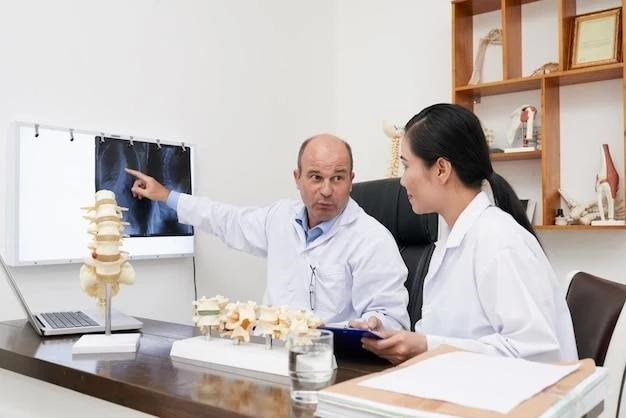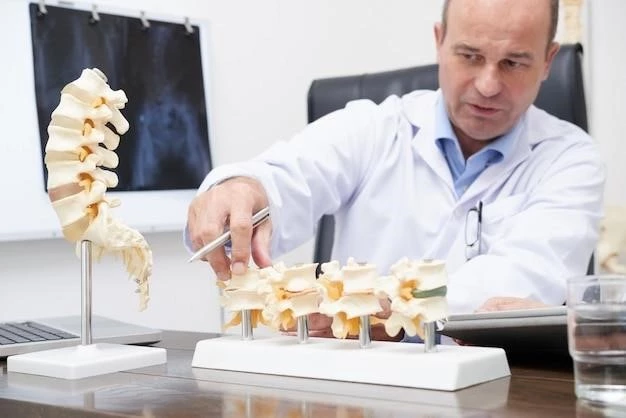Understanding Rare Bone Disorders
Causes of Acromesomelic Dysplasia
Acromesomelic dysplasia is primarily caused by genetic mutations. Most commonly, it is inherited in an autosomal recessive pattern, meaning that both parents must pass on a copy of the mutated gene for the condition to manifest. The mutations often affect genes responsible for skeletal development and growth. In some cases, spontaneous genetic mutations can also lead to the development of this rare bone disorder. Environmental factors are not known to play a significant role in causing acromesomelic dysplasia.
Specifically, mutations in genes such as the GDF5 gene, which provides instructions for making a protein involved in the growth and development of bones and joints, have been linked to acromesomelic dysplasia. These genetic changes disrupt the normal processes of bone formation and growth, resulting in the characteristic skeletal abnormalities seen in individuals with this condition.
Symptoms of Maroteaux Type Dysplasia
Maroteaux type dysplasia, also known as mucopolysaccharidosis type VI, is a rare genetic disorder characterized by a deficiency of an enzyme called arylsulfatase B. This enzyme deficiency leads to the accumulation of certain complex sugars in various tissues and organs of the body. Symptoms of Maroteaux type dysplasia can vary in severity and may include⁚
- Short stature
- Dysostosis multiplex (multiple skeletal abnormalities)
- Joint stiffness and skeletal deformities
- Coarse facial features
- Organomegaly (enlargement of organs such as the liver and spleen)
- Corneal clouding
- Cardiovascular complications
Individuals with Maroteaux type dysplasia may also experience recurrent infections, hernias, and other medical issues. Early diagnosis and management by a multidisciplinary team are crucial in addressing the symptoms and improving the quality of life for individuals affected by this rare bone disorder.
Treatment Options for Acromesomelic Dysplasia
The treatment of acromesomelic dysplasia focuses on managing the symptoms and complications associated with this rare bone disorder. As acromesomelic dysplasia primarily affects skeletal development, treatment options often involve a multidisciplinary approach to address the various aspects of the condition. Some treatment strategies may include⁚
- Orthopedic interventions to improve skeletal alignment and function
- Physical therapy to enhance mobility and muscle strength
- Pain management techniques to alleviate discomfort associated with skeletal abnormalities
- Regular monitoring of growth and development to track progression and adjust treatment strategies accordingly
- Counseling and support services for individuals and families dealing with the challenges of living with acromesomelic dysplasia
While there is currently no cure for acromesomelic dysplasia, early intervention and comprehensive care can help individuals with this condition lead fulfilling lives and mitigate the impact of skeletal abnormalities on their overall well-being.
Genetic Testing for Rare Bone Disorders
Genetic testing plays a crucial role in the diagnosis and management of rare bone disorders, including acromesomelic dysplasia. By analyzing an individual’s genetic makeup, healthcare professionals can identify specific gene mutations associated with these conditions. Genetic testing can help⁚
- Confirm a suspected rare bone disorder based on clinical presentation
- Determine the specific genetic mutation responsible for the disorder
- Assist in family planning and recurrence risk assessment
- Guide personalized treatment strategies based on the underlying genetic cause
Genetic counseling is an integral part of the genetic testing process, providing support, information, and guidance to individuals and families as they navigate the implications of genetic results. By understanding the genetic basis of rare bone disorders, healthcare providers can tailor care plans to address the unique needs of each patient, leading to more effective management and improved outcomes.
Impact of Acromesomelic Dysplasia on Growth
Acromesomelic dysplasia significantly impacts growth and skeletal development in affected individuals. The skeletal abnormalities associated with this rare bone disorder can lead to⁚
- Severe short stature, with individuals often being much shorter than average
- Disproportionate body proportions, particularly affecting the limbs
- Delayed bone age, where skeletal maturation lags behind chronological age
- Joint deformities and limitations in mobility
- Potential complications related to spinal curvature and joint abnormalities
Children with acromesomelic dysplasia may experience challenges in physical activities, social interactions, and overall quality of life due to the impact on growth and development. Early intervention, including growth monitoring, nutritional support, and orthopedic management, can help address these challenges and optimize outcomes for individuals living with acromesomelic dysplasia.
Management of Skeletal Abnormalities in Dysplasia
The management of skeletal abnormalities in dysplasia, such as acromesomelic dysplasia, requires a comprehensive and coordinated approach involving healthcare providers from various specialties. Strategies for managing skeletal abnormalities may include⁚
- Orthopedic interventions to correct bone deformities and improve functional mobility
- Physical therapy to strengthen muscles, improve range of motion, and enhance overall physical capabilities
- Orthotic devices, such as braces or splints, to support proper alignment and mobility
- Pain management techniques to address discomfort associated with skeletal abnormalities
- Regular monitoring of skeletal growth and development to assess progress and adjust treatment plans as needed
Individualized care plans tailored to the specific needs of each patient are essential in optimizing outcomes and quality of life for individuals with skeletal dysplasias. Collaborative care and ongoing evaluation are key components of managing skeletal abnormalities effectively and ensuring long-term well-being.
Surgical Interventions for Maroteaux Type Dysplasia
Surgical interventions may be necessary in the management of skeletal abnormalities associated with Maroteaux type dysplasia, a rare genetic disorder. Common surgical procedures for individuals with Maroteaux type dysplasia may include⁚
- Orthopedic surgeries to correct skeletal deformities, such as limb length inequalities and joint contractures
- Spinal surgeries to address spinal abnormalities, including kyphosis or scoliosis
- Joint surgeries, such as hip or knee replacements, to improve mobility and reduce pain
- Surgical decompression for conditions that lead to nerve compression or spinal cord impingement
- Soft tissue surgeries to release tight ligaments or tendons that contribute to joint stiffness
These surgical interventions are typically performed by a multidisciplinary team of orthopedic surgeons, neurosurgeons, and other specialists to address the complex musculoskeletal issues associated with Maroteaux type dysplasia. Post-operative rehabilitation and long-term monitoring are essential components of the comprehensive care required for individuals undergoing surgical procedures for this rare bone disorder.
Prognosis and Long-Term Outlook for Individuals with Acromesomelic Dysplasia
The prognosis for individuals with acromesomelic dysplasia varies depending on the specific genetic mutation, the severity of skeletal abnormalities, and the effectiveness of management strategies. While acromesomelic dysplasia is a lifelong condition without a cure, early diagnosis and comprehensive care can significantly improve the long-term outlook for affected individuals.
With timely interventions such as orthopedic treatments, physical therapy, and adaptive devices, individuals with acromesomelic dysplasia can achieve better mobility, function, and quality of life. Genetic testing and counseling also play a crucial role in understanding the condition and guiding personalized care plans.

Regular monitoring by a multidisciplinary healthcare team is essential to track growth, address evolving needs, and minimize potential complications associated with acromesomelic dysplasia. By providing ongoing support and interventions tailored to the individual, healthcare professionals can help optimize outcomes and enhance the overall well-being of individuals living with this rare bone disorder.
